The U.S. Navy carried out a crash program last year to enable Freedom class littoral combat ships (LCS) armed with radar-guided AGM-114L Longbow Hellfire missiles to fire those weapons against uncrewed aerial systems (UAS) — in other words, drones. This came in direct response to concerns about Houthi drone threats to American warships operating in and around the Red Sea.
Hints at the new counter-drone capability from the Freedom class LCSs first emerged at the Surface Navy Association’s main annual symposium earlier this week. The Navy responded to TWZ‘s queries for more information sent on Jan. 15 by directing us to a press release put out the following day.
The USS Indianapolis is the first Freedom class LCS to get this counter-drone upgrade, which it received in the course of operations in the Middle East last fall. Indianapolis was deployed between March and November 2024, during which time it also operated in the Atlantic Ocean and around Europe. Indianapolis is also the first LCS from either the Freedom or Independence classes to receive a Combat Action Ribbon, which we will come back to later on.
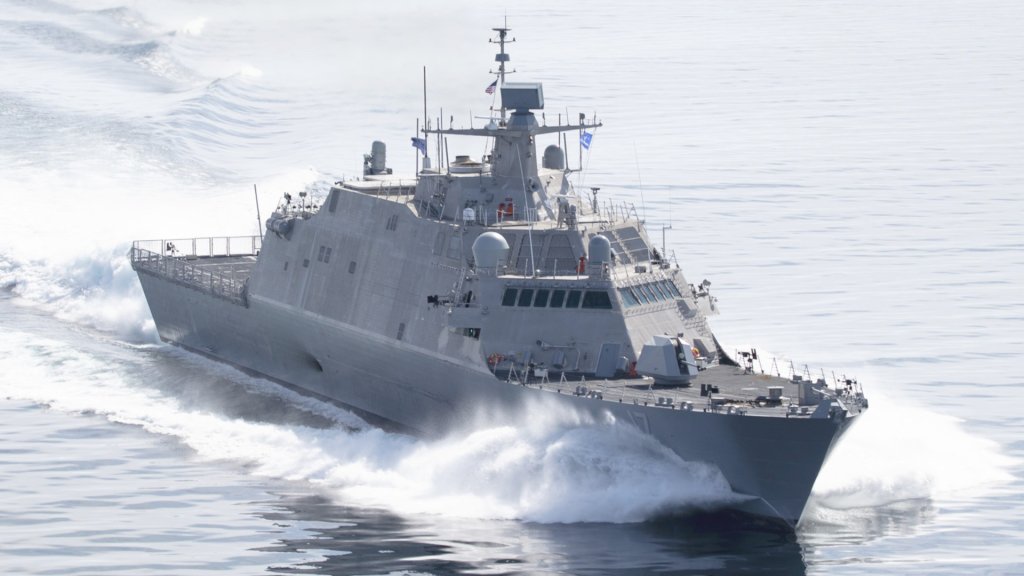
“In Fall 2024, the [Navy’s Littoral Combat Ship Mission Modules] program [office] upgraded both the software and hardware of the Surface-to-Surface Missile Module (SSMM) to enhance the ship’s defense posture while on deployment,” according to a Navy release. “This rapid deployment of C-UAS [counter-uncrewed aerial systems] capability underscores the flexibility of SSMM in addressing a range of threats, including surface, land, and aerial challenges.”
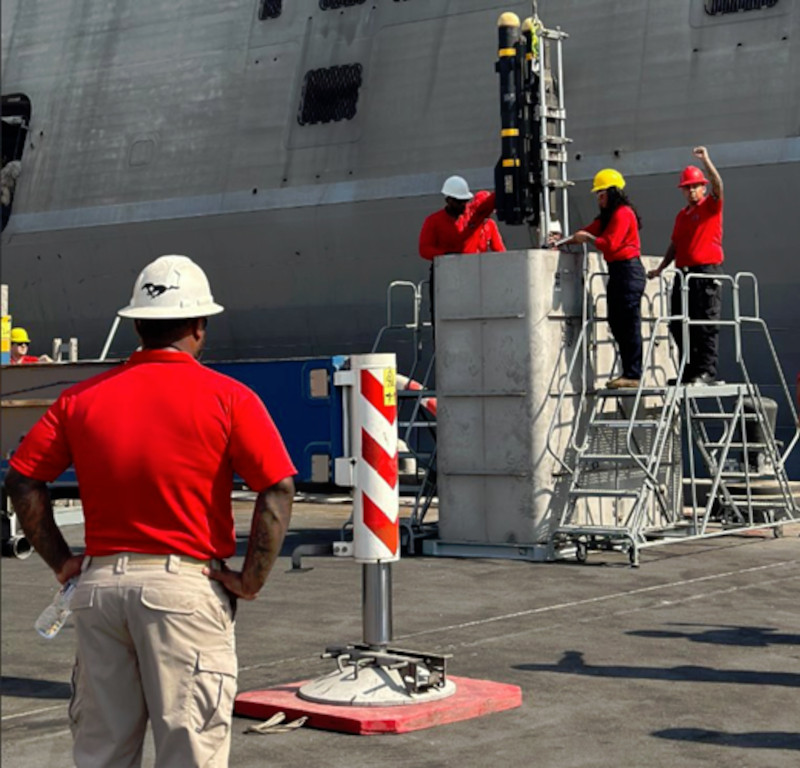
The main element of the SSMMs are launchers that can be loaded with up to 24 AGM-114Ls at a time. Unlike many other Hellfire variants, the Longbow Hellfire features millimeter wave radar rather than laser guidance. On LCSs, the ship’s radar cues the missiles to their targets and the seekers on the missile lock on and destroy their assigned targets autonomously. The SSMM reached initial operational capability on Freedom class LCSs in 2019. The same year, the Navy began testing the module on Independence class LCSs.

“Recent events in the U.S. 5th Fleet Area of Responsibility (AoR) underscore the importance of equipping our warships with up-to-date C-UAS systems to keep emerging threats at bay,” Navy Capt. Matthew Lehmann, head of the LCS Mission Modules program office, said in a statement. “By leveraging the adaptability of proven technologies … we were able to deliver on a critical need to the Fleet. This accomplishment showcases the ingenuity and resourcefulness of the Littoral Combat Ship Mission Module Program.”
“This rapid integration of C-UAS capabilities enhances our ability to project power and maintain freedom of maneuver in contested environments,” Rear. Adm. Kevin Smith, program executive officer for Unmanned and Small Combatants at Naval Sea Systems Command (NAVSEA), also said in a statement. “By equipping LCS with advanced, flexible systems like the SSMM, we are not only addressing immediate threats but also strengthening the Navy’s overall strategy for operational agility, deterrence, and sustained dominance in littoral regions.”
The main purpose of the SSMM initially was to give Freedom or Independence-class LCSs additional capacity to counter swarms of small boats, crewed and uncrewed, something that remains a real threat. Iranian-backed Houthi militants in Yemen have been particular pioneers in the use of explosive-laden uncrewed kamikaze boats. However, Ukraine’s employment of a still-expanding array of uncrewed surface vessels, including kamikaze types, in and around the Black Sea has been responsible for fully thrusting the dangers they pose into the mainstream consciousness. In 2022, the Navy also showed that the SSMM could be used to fire Longbow Hellfires at targets on land.
Leveraging the SSMM now as a rapid pathway to giving LCSs added counter-drone capabilities makes good sense. Beyond offering an additional layer of self-defense against uncrewed aerial threats for the ships themselves, this could allow them to provide a short-range protective umbrella for other friendly vessels nearby. It’s unclear what the AGM-114L’s range is when launched from the surface rather than the air. The Longbow Hellfire’s maximum reach in the air-launched mode is reportedly between five and five and a half miles (8,000 and 9,000 meters)
The idea, broadly, of employing AGM-114s, especially the radar-guided Longbow variant, against aerial threats is also not new. Israeli AH-64 attack helicopters have used Hellfires to down drones, and the U.S. Army is increasingly training to do the same with its Apaches. Other U.S. military helicopters might be able to employ Hellfires in the air-to-air role, as well. The Army has also explored employing AGM-114Ls as surface-to-air interceptors in the past.


At the same time, just adding the counter-drone functionality to the SSMM last year underscores how the Navy and the rest of the U.S. military are still very much playing catch-up in responding to uncrewed aerial threats. The dangers posed by drones, including lower-end kamikaze types, are not new, as TWZ regularly notes. The scale and scope of these capabilities and the underlying technologies are ever-growing and are steadily proliferating even among non-state actors like the Houthis, as well as the armed forces of nation states large and small.
How many more SSMM-equipped Freedom class LCSs now are in line to get the new counter-drone upgrades is unclear, as is when or if that capability might filter down to Independence class types. The Navy currently has 10 Freedom class LCSs in service, with another one now in the process of being fitted out. There are 16 more Independence class LCSs on the service’s rolls and another one of those ships on the way.
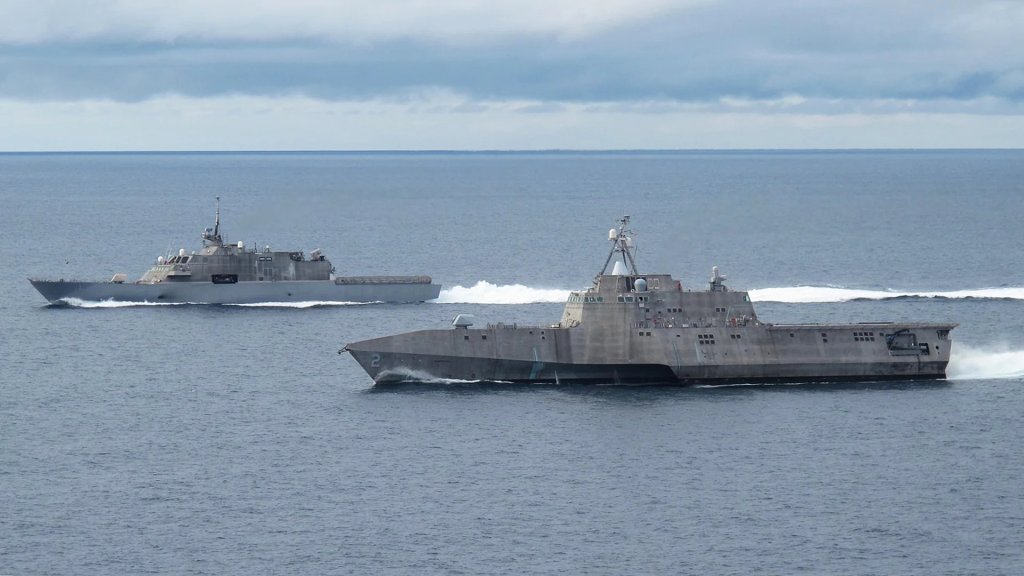
The addition of counter-drone capability to the SSMM might also open up new avenues to employing Hellfires, as well as that missile successor the AGM-179A Joint Air-to-Ground Missile (JAGM), on other Navy ships in that role, as well as against other target sets. Lockheed Martin notably had a model of an Arleigh Burke class destroyer equipped with two arrays of launchers that could be used to fire Hellfires or JAGMs on display at the Surface Navy Association’s main annual symposium earlier this week.
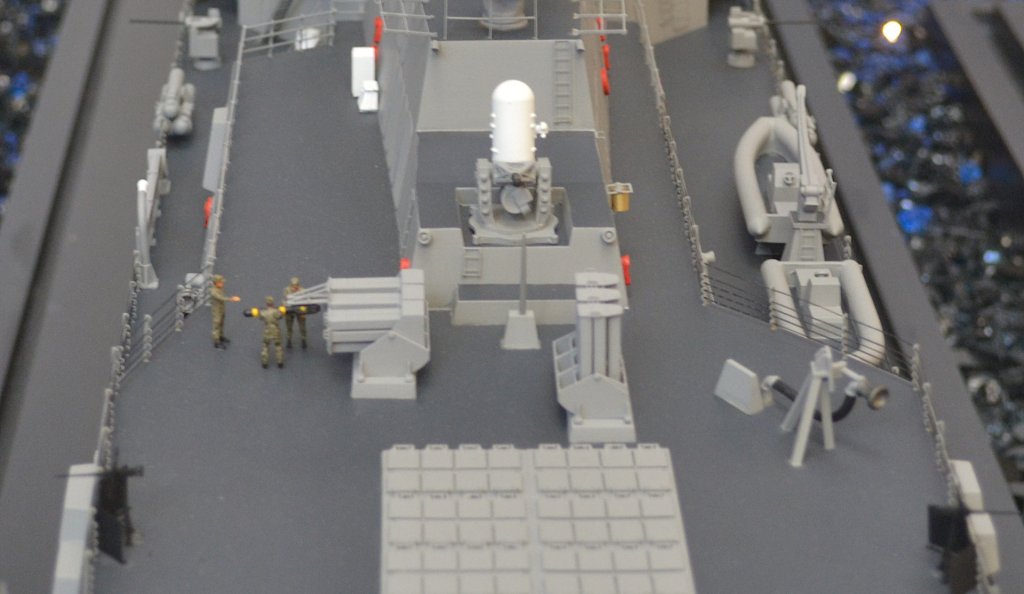
TWZ has reached out to the Navy and Lockheed Martin for more information.
Speaking at the Surface Navy Association symposium on Wednesday, Navy Capt. Mark Haney did say the Freedom class USS Minneapolis-Saint Paul is set to receive the same counter-drone modifications to its SSMM that are now found on the USS Indianapolis. Haney, who is commodore of Littoral Combat Ship Squadron 2 based in Mayport, Florida, also said that Minneapolis-Saint Paul will be the most capable Freedom class LCS deployed to date when it heads out later this year.
“Full SUW [Surface Warfare] package, 30-millimeter guns, an SSMM capability that also adds the counter-UAS to it, a Romeo [MH-60R Seahawk] helicopter det[achment], as well as a new UAV [uncrewed aerial vehicle] that we’ve never deployed before on the LCS, and that is the Aerosonde,” Haney explained. The ship will also have “two 11-meter RIBs [rigid inflatable boats], [a U.S.] Coast Guard det[achment], and a U.S. Navy VBSS [visit, board, search, and seizure] capability.”
Freedom class LCSs also have a 57mm gun in a turret on the bow and a 21-round launcher for RIM-116 Rolling Airframe Missiles (RAM) toward the stern. RAMs provide close-in defense primarily against incoming cruise missiles, but can also be employed against other aerial threats, including drones, as well as small boats. It’s worth noting here that the AGM-114L in the anti-drone role also offers a valuable lower-cost alternative to the RIM-116. Official budget documents from the Army, the lead service for Hellfire, provide only an average unit cost across all variants, pegged at between approximately $150,000 and $215,000 in recent years. The current price tag on a single RAM is around $950,000. RAM is the cheapest of U.S. Navy counter-air missiles, with longer-range weapons being a multiple of that cost.

More firepower for Freedom class LCSs is also expected in the future in the form of launchers for Naval Strike Missile (NSM) cruise missiles and greater availability of containerized Mk 70 launchers that can fire multi-purpose Standard Missile-6 (SM-6) and Tomahawk cruise missiles. It is worth noting that the Mk 70s go on the ship’s stern helipad, which would severely limit, if not eliminate, its ability to embark helicopters.
Newer members of the Freedom class, including Minneapolis-Saint Paul, also have an active electronically scanned array (AESA) TRS-4D air and surface search and target acquisition radar. All Freedoms have an electronic support measure (ESM) package, as well.
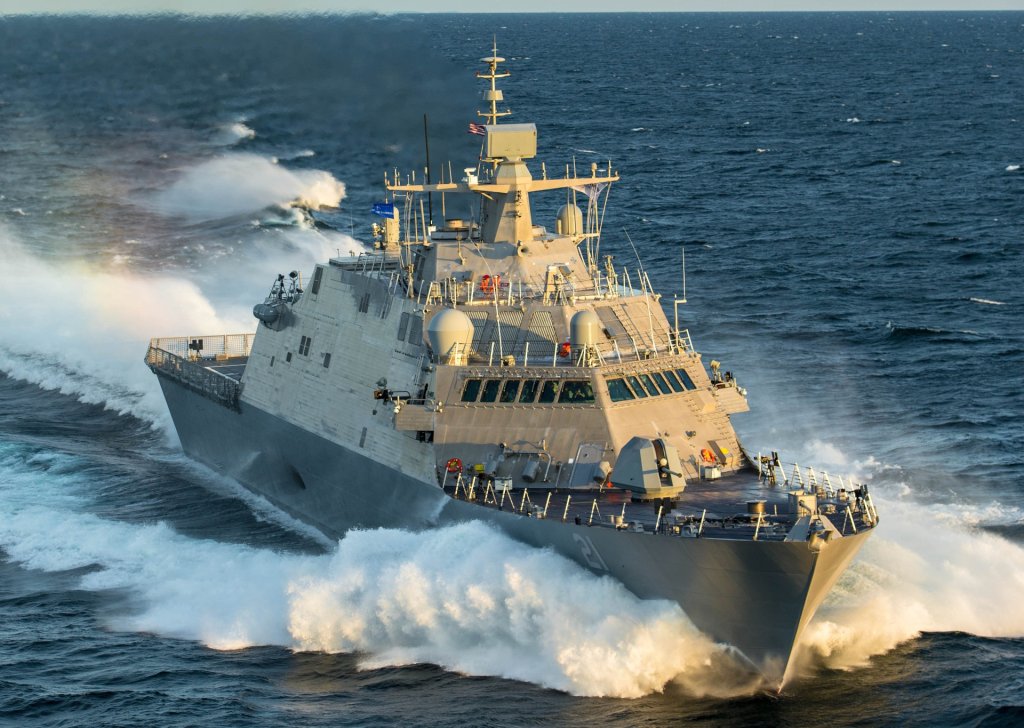
At the same time, Haney’s comments this week highlighted longer-standing issues with the Freedom and Independence class LCSs having failed to live up to expectations and continued questions about their operational utility. For instance, originally the expectation was the LCSs would be readily reconfigurable with different modules and mission packages like the SSMM to increase their flexibility. The ships are now deployed in largely static configurations.
In addition, the two classes of LCSs have also been beset by structural and technical issues over the years. Propulsion systems problems have plagued the Freedom class in particular and have contributed to the decommissioning of some of those ships well before the end of their expected service lives.
The Navy has been pushing to get more operational use out of its LCSs, which currently represent a significant portion of its overall surface warship fleets, in recent years. This includes the first-ever deployment of a Freedom class type to the Middle East in 2022 and plans to begin forward-deploying other ships in the class to Bahrain later this year. Independence class types regularly sail in the Pacific. As earlier noted, USS Indianapolis has now become the first LCS to receive a Combat Action Ribbon, which was awarded following a Houthi attack aimed at the ship, as well as Arleigh Burke class destroyers USS Stockdale and USS Spruance, last September.
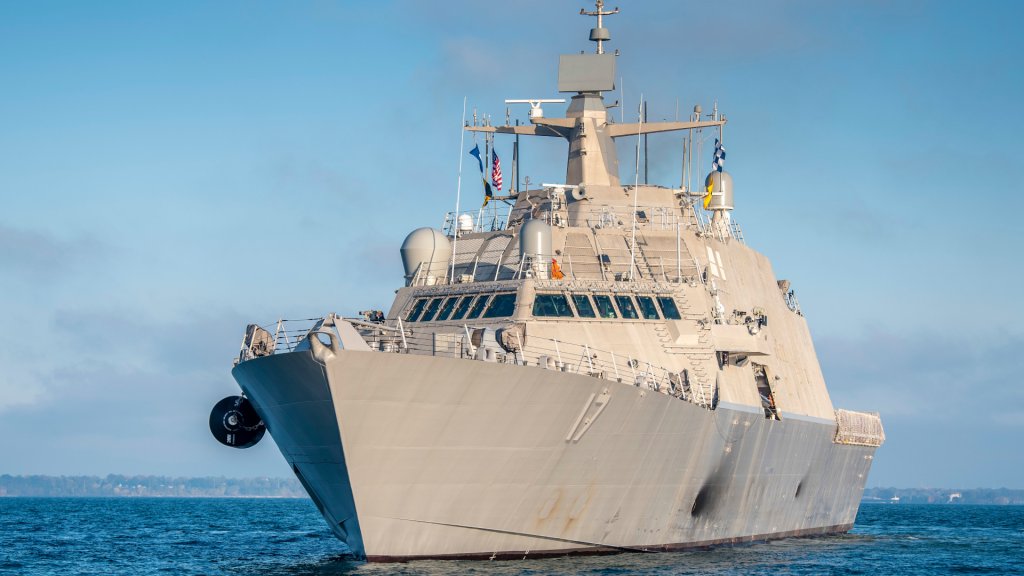
The full citation accompanying the Combat Action Ribbon, which TWZ obtained from the Navy, reads:
“For outstanding service in support of military operations from 25 September 2024 to 27 September 2024. USS Indianapolis (LCS 17) effectively executed dynamic and kinetic responses to threats from Iranian-backed Houthi non-state actors emanating from the Red Sea in the Fifth Fleet Area of Responsibility (AOR).”
“From 25 September 2024 to 27 September 2024, USS Indianapolis (LCS 17), USS Stockdale (DDG 106), and USS Spruance (DDG 111) were operating off the coast of Yemen in the Red Sea conducting a northbound Bab-al-Mandeb transit when several salvos of enemy unmanned aerial vehicles and missiles were launched from Yemen, targeting the Surface Action Group (SAG). USS Indianapolis (LCS 17) provided early indications and warnings through the analysis of electronic signals, prioritizing potential threats, ensuring proper de-confliction orders across the force in the Electronic Warfare Spectrum, ensuring the SAG was prepared to respond to any hostile act in the Recognized Maritime Picture (RMP) and Recognized Air Picture (RAP). In response, the SAG engaged with Standard Missiles 2 (RIM-66), Standard Missiles 6 (RIM-176), and launched chaff eliminating the threats and enabling the SAG to continue its mission.”
Still, there is notably no indication here that USS Indianapolis fired any of its own weapons in anger in this particular engagement, which also prominently highlights the lack of more robust air defense capabilities on the LCSs. Whether the ship employed any of its weapons against hostile targets in the course of the rest of its deployment is unknown.
All of this also now comes amid major delays and other issues with the Navy’s Constellation class frigate program. The service has been working to acquire the new frigates in no small part to provide a more capable small surface combatant than the long-underperforming LCSs.
In the meantime, the Navy continues to try to squeeze more operational value of its LCS, including now through the addition of counter-drone capability to the SSMM.
Geoff Ziezulewicz contributed to this report.
Contact the author: joe@twz.com
